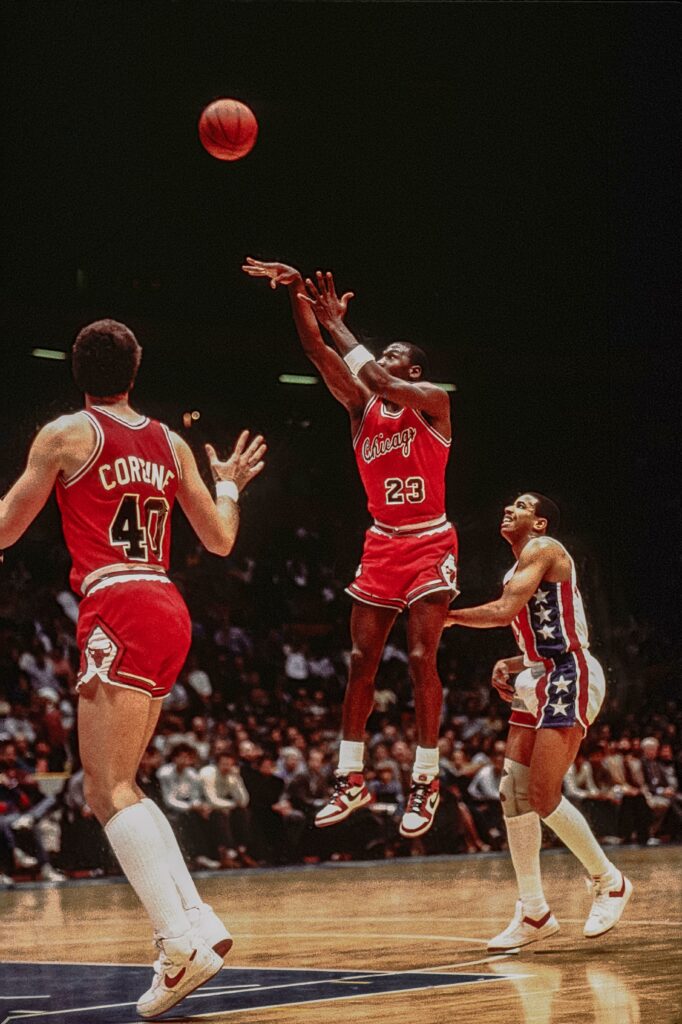Sneaker glory

We speak to curator Jean Leclerq, expert of the sports industry, about the the evolution and impact of sneakers in society as explored in Sneakers at the Museum, an exhibition on now at the Musée de l’Homme in Paris
Sneakers are omnipresent in our daily life. How did they go from the stadiums to the street; from the marginality of the counterculture to popular culture?
The sneaker went from the stadium to the street for several reasons. The first fundamental element is the advent of sport, its virtues for physical development and its “Romantic and Lyrical” factor. Think epic matches with a David vs. Goliath aspect; the identification with new heroes; and the construction of legends or belonging to social groups sharing the values of these legends.
Moreover, there have been several accelerating events. First, the development of television and sports broadcasting in the ’60s and ’70s, followed by the birth of ESPN in the USA in the early ’80s. Then the development of disco, funk and rap. Sneakers are better suited to the colorful and whimsical codes of these movements and are adapted to street dance. This was amplified further still by the birth of MTV in early 1980.
These overlapping phenomena give sneakers and sportswear immense and unprecedented exposure and allows the creation of global sports legends who travel the world in their iconic looks. Michael Jordan, Bjorn Borg, Carl Lewis and Yannick Noah all come to mind.
Another determining factor is the advent of basketball and the identification of the Black American community with new heroes. Michael Jordan embodies this. The fact that basketball shoes (and tennis shoes) are worn as easily in the stadium as in the street means that these two sports categories will have more viable silhouettes (Air Jordan, Stan Smith …) compared to athletics or soccer. We will see fashion’s acceptance of the sneaker as a stylistic element from the mid-‘90s onwards thanks to designers such as Giorgio Armani or Jean-Charles de Castelbajac. Sneakers will gradually and progressively enter women’s wardrobes, too. From 2015, we see that sneakers are no longer a “statement” for a woman. This kickstars the era of collaborations between sport brands and artists to create mutually beneficial hype. Luxury brands then get into the game, starting in the 2000s with Puma and Jil Sander, Adidas and Yohji Yamamoto. The next phase – the one that continues today – expands to Louis Vuitton, Chanel, Dior or Balenciaga.
The success of sneakers is often attributed to their comfort. How are they more adapted to our bodies than classic shoes?
Comfort is a question of feeling. Sneakers are not necessarily more adapted to our morphology, just on average less constraining than a clog, or a pump, for example. Often, they provide welcome cushioning on hard surfaces like the asphalt of sidewalks or the concrete floors of stores or offices. Thus, they are more suitable than traditional shoes, such as ballet flats or derbies, to our lifestyle in which “urban travel” is a major activity of our time.
To what extent can we say that sneakers are the expression of a radical change in society? How are they revolutionary?
The profusion of styles, colors, shapes and materials has revolutionized a shoe industry that was previously rather one-dimensional. However, in my opinion, sneakers are not a revolution but testaments and tools of successive evolutions in sports, music, fashion and popular culture. That’s why this phenomenon continues to gain momentum.
At the end of 2019, the designer Virgil Abloh had declared that streetwear was bound to disappear. How do you see the future of the sneaker?
The sneaker will need to assume a new form, because everything that does not evolve disappears. Nevertheless, the Jordan, so well managed by its creators, will not disappear any more than the Chanel N°5.
This interview has been lightly edited for length and clarity.



